Angles matter in every sport. In football, taking the proper angle toward a ball carrier can mean the difference between a tackle and a touchdown. In golf, approaching the green with a particular club and swing path determines whether you’re putting for par or digging yourself out of a bunker.
In pickleball, angles mean everything.
We'll explore the nuances of angles in doubles pickleball and how better understanding them can greatly improve your decision making and your ability to attack.
Why getting to and staying at the kitchen is so important
Some of the earliest advice you’ll receive in pickleball is to "get to the kitchen and stay there." For the most part, that advice is sound. Of course, sometimes you want to step off the kitchen line, and if you get caught rushing up to the kitchen too quickly, it’ll cost you.
All things being equal, the importance of "owning" the kitchen cannot be overstated.
Eliminate attack angles from your opponent
Strategically, being at the kitchen eliminates specific angles from an attacker. Getting the ball down at someone's feet is more difficult when they are close to the net. Also, sneaking a passing shot by someone in that position is nearly impossible.
Give yourself better attack angles
When you are at the kitchen and your opponent isn’t, you have more attack angles than they do. Also, because you are more likely to hit the ball while it’s at its peak, you have the advantage of hitting down on the ball more often.
Visual examples ...
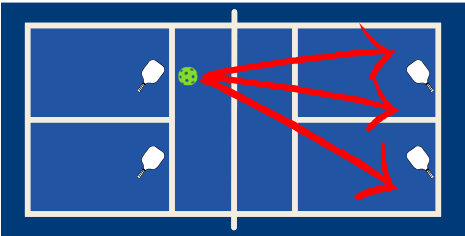
In this first diagram, the amount of space available to the attacker provides plenty of opportunity to hit a ball without risking a strong return back or hitting the ball out of bounds.
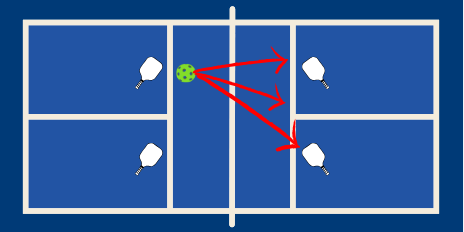
This second diagram shows limited space, making an attack more difficult.
This is why getting to the kitchen is so important, and you should take time, as needed, to get there.
The quickest path is a straight line
Another commonly taught strategy is to "Drive straight ahead and drop it across." While you never want to say to "always" or "never" do something, it is typically a mistake to drive the ball crosscourt to a stationary opponent.
Instead, you want to hit the ball hard to the player straight ahead of you.
The reason is simple. The quickest path to anything is a straight line. Take a look at the diagram below:
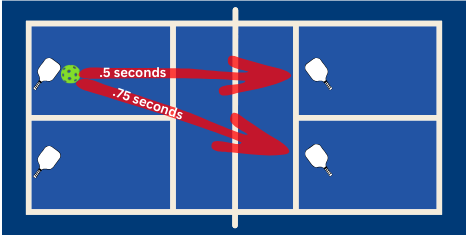
When you drive straight, your opponent has less time to react than if you drive the ball crosscourt.
The actual time may vary, based on the speed of the drive, wind, trajectory, etc., but the general concept is you want your opponents to have as little time to counter your attack as possible.
Softer drop shots, which are not attack shots but instead high-arcing shots, are ideal for going middle or crosscourt because they give you and your teammate additional time to get into a more advantageous position (like at the kitchen line).
Of course, these are not hard and fast rules that should be followed 100 percent of the time. However, if there is such a thing as a "default" option in pickleball, taking the strategic approach of "Drive straight ahead and drop it across" will win you a lot of pickleball matches.
Need a new angle? Take it vertical
When discussing pickleball strategy and angles, we often discuss shot options as down the line, to the middle, or crosscourt. However, there is another angle worth adding to this list: vertical.
Lobbing shots over your opponents’ heads is severely underrated.
When done well, lobs can:
- Buy you time to improve your positioning
- Catch your opponents off guard and cause them to panic
- Open up new attack angles for you and your partner
How to Hit the Perfect Pickleball Lob and When It’s Simply Not Cool
When is the right time to hit a lob shot in pickleball? Is it a good strategy? We discuss all aspects of the shot and when it’s simply not appropriate.
 The Dink PickleballJason Flamm
The Dink PickleballJason Flamm
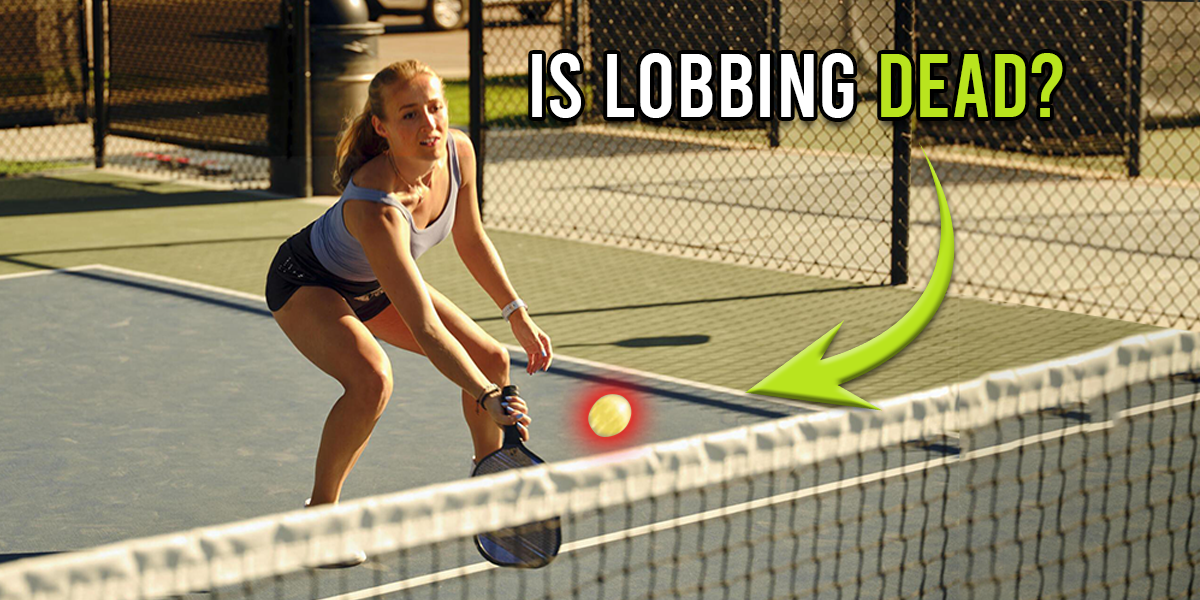
The third one is not discussed as often.
An effective lob pushes your opponents back toward the baseline. This scramble back re-opens the previously lost angles and forces them to try and return to the kitchen.
These two diagrams show a team's attackable space before and after the lob.
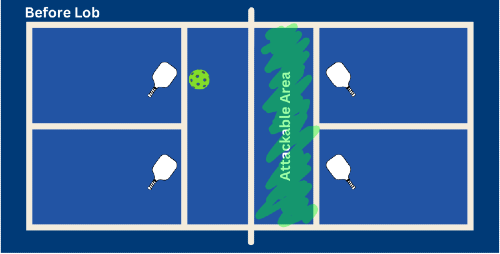
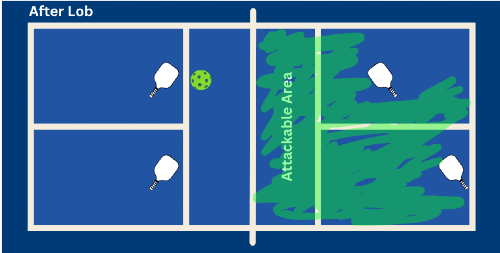
Notice in the "After Lob" diagram that depending on where your second opponent decides to retreat, you can also create extra attackable space and angles between your opponents.
This is why using offensive lobs while all players are at the kitchen is such a great strategy.
Speedups in the middle versus the outside
The final point to make about angles (though we could go on forever) is explained really well by a current pickleball pro, Christian Alshon, in this Instagram video:
In it, he explains how attacking with a speed up down the middle severely limits the angles for the attacker, whereas if you speed up the ball from down the line, you have more options.
We represent this in the following two diagrams:
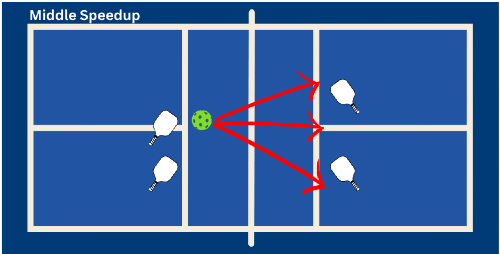
The middle speed up is limited and hitting the ball toward either sideline gives the extra risk of it going out of bounds.
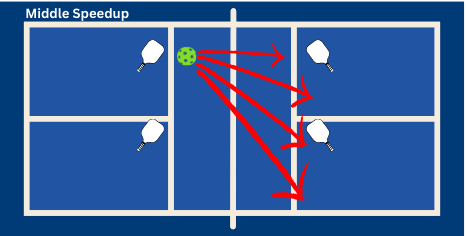
When speeding up from the outside, you have extra angles to aim for and less risk of hitting an out ball.
The takeaway
Pickleball is a fast-paced sport (even if it doesn’t look so on TV), and split decisions are constantly made while playing. You can’t pause the match to consider all your options.
By understanding these concepts beforehand, you’ll know what to look for and how to take advantage of these moments when you’re in them.
Anuncie Aqui / Advertise Here
Sua marca para o mundo Pickleball! / Your brand for the Pickleball world!

 English
English  Spanish
Spanish  Portuguese
Portuguese  German
German  Italian
Italian  Japanese
Japanese  French
French  Polish
Polish  Russian
Russian  Netherlands
Netherlands  Hungarian
Hungarian  Turkish
Turkish  Videos
Videos 
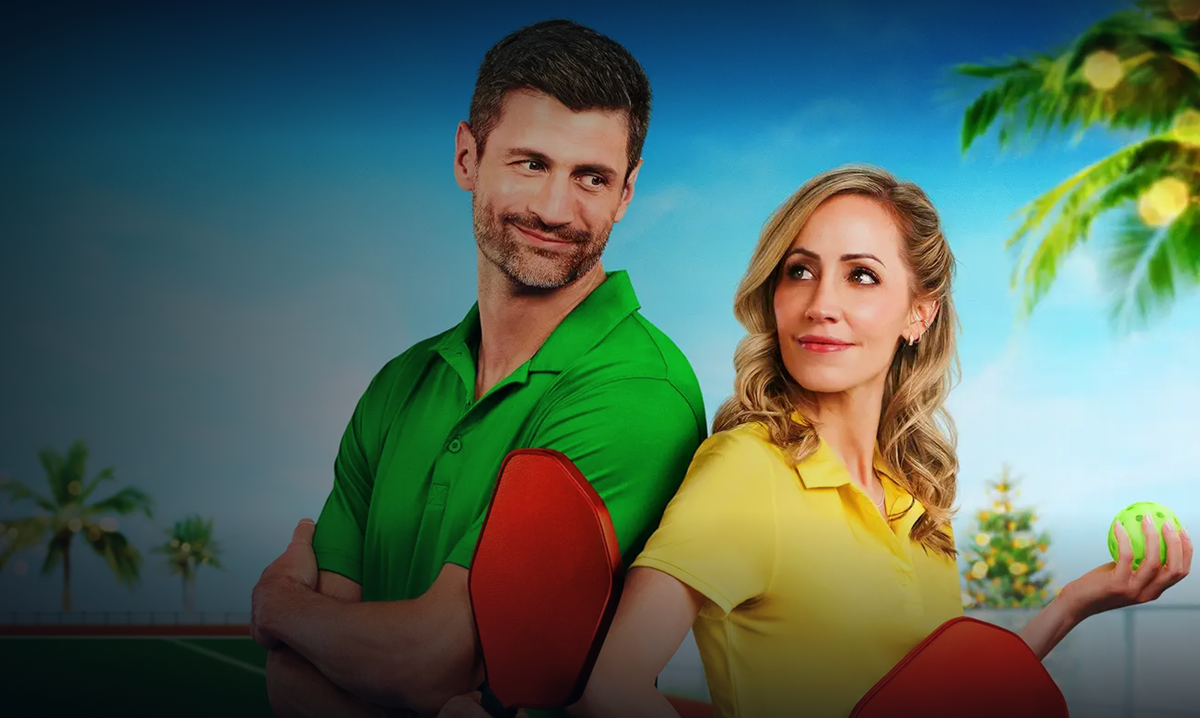

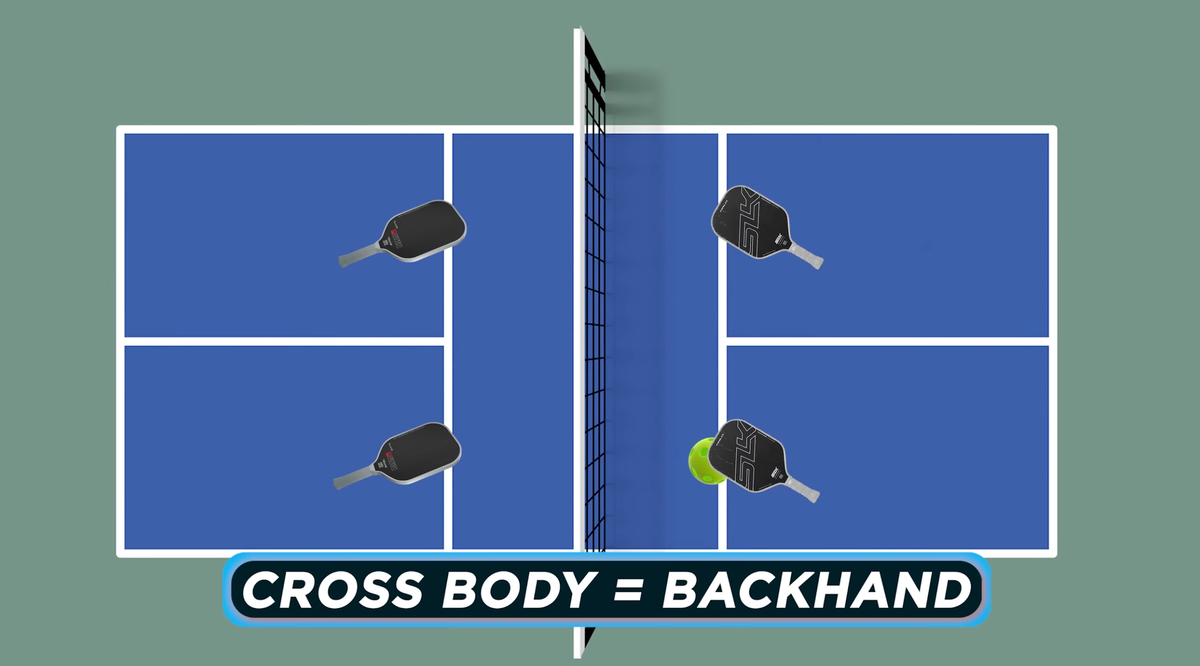
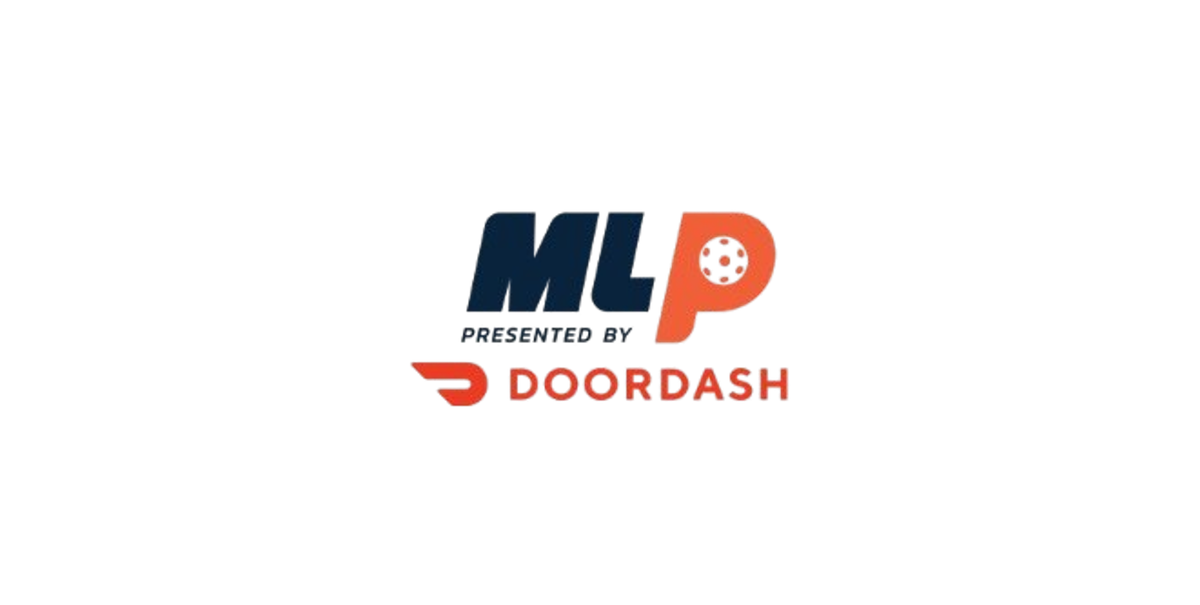


 English (US) ·
English (US) ·  Portuguese (BR) ·
Portuguese (BR) ·